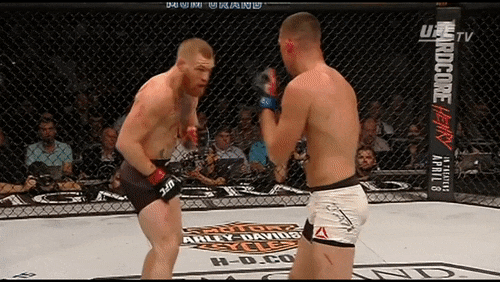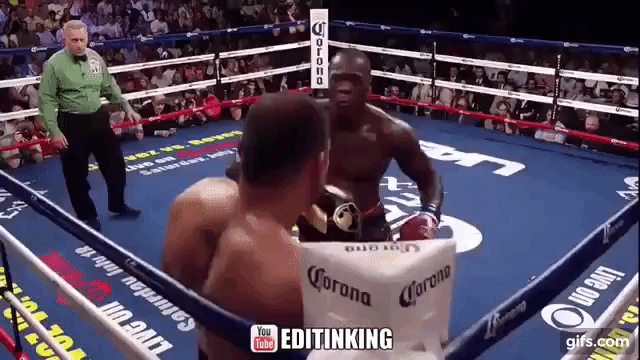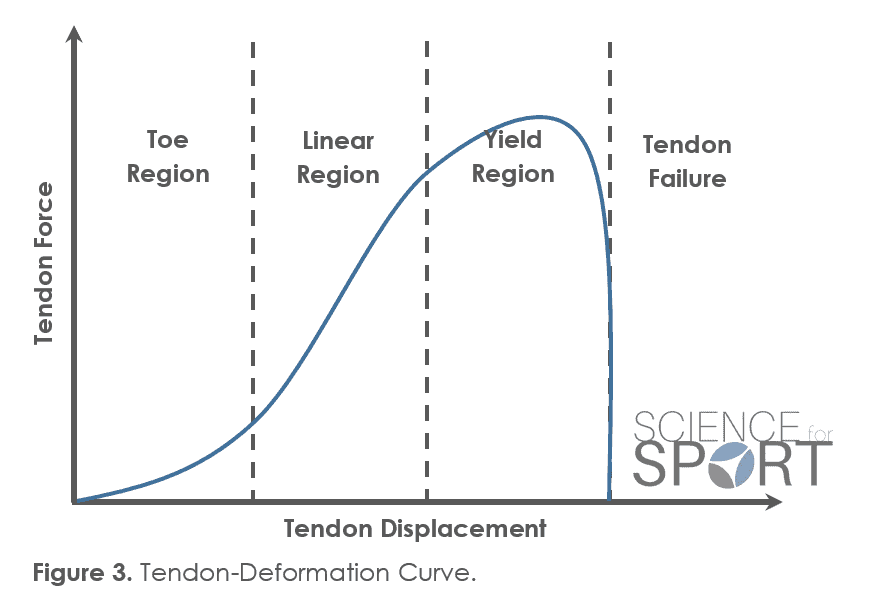- Joined
- Nov 15, 2017
- Messages
- 870
- Reaction score
- 0
Sano blessYou always use "elastic recoil" to some extent, even when being tight. It's part of the process. Lower body and upper body.

Sano blessYou always use "elastic recoil" to some extent, even when being tight. It's part of the process. Lower body and upper body.

Sano bless


Alright I'll chime in here because this annoys me.
Your understanding of both physiology, biomechanics and boxing technique is way off and you are using terms and phrases wrong. The video in the OP also seems like something translated from russian with google translate or something as it's all over the place. First of all, tendons do not "grow larger" acutely during dynamic, isometric nor ballistic (plyometric) exercise in the way it's proposed. They elongate, and yes they elongate during normal dynamic training as well. During ballistic training, what they describe as running, walking or hopping, the muscles do not isometrically contract, rather they contract dynamically as well. While there is elements of isometric contraction obviously during any concentric-isometric-eccentric phase, it's wrong terminology to use here.
The "elastic recoil" effect you are talking about is the stretch shortening cycle, or myotatic reflex, which in reality means that when tendons are elongated at high speeds energy is build which is released during the concentric muscle action. This has to happen at high velocities, generally around < 200 milliseconds for it to be true plyometrics using the full energy buildup from the stretch reflex, otherwise the energy dissipates.
The "is not synchronized with maximum force output of muscles" is also nonsense and it's highly depending on action and angle. Your point about the maximum amount of crossbridges being avaliable at mid range (meaning when a muscle is roughly in the middle of it's range of motion) is useless in a vacuum and simplified, because it doesn't take into account the biomechanical factors that is used to create power nor the passive force increase during muscle and tendon elongation.
Lastly, yes that is a slapping hook. It has no structure behind it, which is most of the time not how you would be taught a textbook hook. It takes advantage of the stretch reflex, but it doesn't take advantage of proper biomechanics and positioning. If you don't know what a slappy hook is then you don't even have a beginners understanding of boxing, and you definitely don't know anything about biomechanics nor physiology so stop pretending like you do.
Slapping hook:


Not a slapping hook:

Obviously, range matters and different weapons have different uses. There is a lot of different ways to generate power as well which works better for some and less for others. Basics are still basics though.


Btw, I'm in the process of putting up my website where I will cover all these things and a lot more about biomechanics and strength & conditioning for various sports, including striking. I will also be going over periodization, force velocity profiling, strength adaptions and more. I am constantly writing, reading and working with clients now so it's a work in progress. I will probably use myself as a case study to support some of the methodology to improve lower and upper body explosive power. I'll keep you posted, although I have some stuff now it'll probably be a few months before I'm satisfied enough to present it.
Both are slapping punches, Wilder is just a greatly superior athlete. It can work.It seems neither the two of us knows what he's talking about, the elastic recoil is not a myotatic reflex:
https://en.wikipedia.org/wiki/Stretch_reflex
The stretch reflex (myotatic reflex) is a muscle contraction in response to stretching within the muscle. It is a monosynaptic reflex which provides automatic regulation of skeletal muscle length.
When a muscle lengthens, the muscle spindle is stretched and its nerve activity increases. This increases alpha motor neuron activity, causing the muscle fibers to contract and thus resist the stretching. A secondary set of neurons also causes the opposing muscle to relax. The reflex functions to maintain the muscle at a constant length.
Of course the first video oversimplifies things but it's kind of self-explanatory that muscles do work when you run.
Also there is no such things as slap hook in boxing, what you show is a boston slap or however they call it.
You're trying to compare a KO punch with the slaps of that diaz guy.


I did not study exercise physiology or PT so yes you should take what I say about biomechanics with a grain of salt, I know I would.

I don't think it has anything to do with how the Mexicans developed their style, whatever style that is, but maybe I just don't understand your point. I also don't see how the graph pertains to whatever you meant by synchronization either I'm sorry. It's showing the tendon-deformation curve, meaning how much a tendon can be displaced by force (elongated) before it snaps.That article was pretty good.
The stretch-shortening cycle (SSC) refers to the ‘pre-stretch’ or ‘countermovement’ action that is commonly observed during typical human movements such as jumping. This pre-stretch allows the athlete to produce more force and move quicker.
An abundance of research has demonstrated that stronger athletes have a better ability to store elastic energy over weaker individuals (31, 32, 33). Elite athletes from both power- and endurance-based sports have also been demonstrated to possess a superior ability to store elastic energy (31, 32). Furthermore, efficient utilisation of the SSC during sprinting has shown to recover approximately 60% of total mechanical energy, suggesting the other 40% is recovered by metabolic processes (34, 35).
The graph kind of makes a point concerning the synchronization.

This could help explain how Mexicans have developed their boxing style.
I don't think it has anything to do with how the Mexicans developed their style, whatever style that is, but maybe I just don't understand your point. I also don't see how the graph pertains to whatever you meant by synchronization either I'm sorry. It's showing the tendon-deformation curve, meaning how much a tendon can be displaced by force (elongated) before it snaps.
It takes a long time to read this stuff and understand it, and then when you have to apply it to movements during sports it gets even more complex. I've studied this stuff for years now and I'm still just scratching the surface.
You are saying that during the elongation of the tendon, before it picks up slack, that if you contract the muscle there then you wont get the benefits because energy has not build up in the tendon yet? Yes and no. First of all, there is already an eccentric contraction as the muscle (and tendon) is elongated as illustrated in the begining of the qoutations from the article you posted. There's a difference between an eccentric, isometric and concentric contraction. Yes you have to be relaxed and yes you have to practice the timing of your movements (neuromuscular synergies) to build up and release most power. That comes through practice, repetition and effort. It's not something you really consciously think about.From what I understand a simple model would be to consider the tendon as a spring.
The articles said:
"This means that the muscle must contract and stiffen prior to the beginning of the SSC during ground contact – known as ‘muscular pre-activity’. The muscle must then remain contracted/ stiff during the first two processes of the SSC (eccentric and amortisation phases) in order to transmit the isometric forces into the tendon. This causes the deformation/ lengthening of the tendon and the development of the storage elastic energy.
During the concentric phase of the SSC (often referred to as the ‘positive acceleration’ phase), the muscle is then able to concentrically contract and provide additional propulsive force (2). Failing to stiffen during the eccentric and amortisation phases, means the performance enhancing effect of the SSC will be lost and the joint would likely collapse. This demonstrates the importance of muscle stiffness during the SSC and its ability to improve performance. It also suggests that athletes’ with higher levels of muscular strength can absorb more force (i.e. higher rate of loading), and therefore have a better ability to use the SSC."
The graph shows the slack of the spring (tendon) before it can actually store energy.
"The toe-region of the SSC, otherwise simply explained as ‘slack within the tendon’ is present at the very beginning of the SSC. To simplify this concept, imagine a coiled up piece of string that is being pulled from both ends in order to straighten it out and create tension"
If you contract the muscle during this stage you will not store any energy in the muscle, that's what I call synchronization. Ofcourse it's probably more complex than that but the concept can't be far off.\
Now you have to synchronize that with the external forces i.e. inertial forces which are exerted on the limbs.
Mexicans have that flow in their rhythm.
You are saying that during the elongation of the tendon, before it picks up slack, that if you contract the muscle there then you wont get the benefits because energy has not build up in the tendon yet? Yes and no. First of all, there is already an eccentric contraction as the muscle (and tendon) is elongated as illustrated in the begining of the qoutations from the article you posted. There's a difference between an eccentric, isometric and concentric contraction. Yes you have to be relaxed and yes you have to practice the timing of your movements (neuromuscular synergies) to build up and release most power. That comes through practice, repetition and effort. It's not something you really consciously think about.
I don't see how it pertains to Mexicans particularly, as flows, rhythms and being relaxed encompasses much more than just using or not using the stretch reflex. The stretch reflex is something that happens wether you want it to or not, and much faster that you think (below 200 milliseconds), although you can train it specifcly. There's a lot of moving parts and you're trying to pidgeonhole the stretch reflex into other parts where it isn't important.
I wrote this little piece on the mechanics of power production in punching which covers a few more aspects. It's a bit superficial but I'll go into it more in detail on my website in the near future:
http://forums.sherdog.com/posts/125416715/
Besides the power of the limbs themselves, and keeping with the physics theme, the speed of which someone can turn their hips, or the angular velocity, is especially interesting. If we look at the rotational force multiplier of a toy propeller we get a better idea:

The distance between the point where the force is applied and the axis of rotation is 1/8th inches here. The distance between the tip of the blade and axis of rotation is 4 inches here. You take the blade distance, 4, and divide it by the base distance, 1/8, and you get 32 times force. Meaning that any increase in the speed of the turn at the base is amplified 32 times at the blades. That is why you can make it fly by spinning the base and not the blades.
In the older post you mentioned rotational movement
It's actually not so simple as that, you have to take into account the conservation of rotational momentum.
So you have to align all the force vectors with the direction of the punch otherwise you're opposing yourself.
Lastly, yes that is a slapping hook. It has no structure behind it, which is most of the time not how you would be taught a textbook hook. It takes advantage of the stretch reflex, but it doesn't take advantage of proper biomechanics and positioning. If you don't know what a slappy hook is then you don't even have a beginners understanding of boxing, and you definitely don't know anything about biomechanics nor physiology so stop pretending like you do
What are you even talking about? Conservation of angular momentum means that the angular momentum, ie rotational speed, stays the same unless external force is acted upon it. So yes if you decrease the rotational inertia, in this instance by having your center of mass closer to the axis of rotation, you will increase the angular velocity and in turn speed of rotation. What's your point?
In the older post you mentioned rotational movement
It's actually not so simple as that, you have to take into account the conservation of rotational momentum.
So you have to align all the force vectors with the direction of the punch otherwise you're opposing yourself.
What about it? You are just throwing things at the wall now hoping something will stick. I was geniuinely trying to be accomodating here and you gotta troll me like this.Centrifugal force, what else?..
What about it? You are just throwing things at the wall now hoping something will stick. I was geniuinely trying to be accomodating here and you gotta troll me like this.
I've always wondered why certain people pretend to be coaches for various martial arts, I would quit this coaching of yours, if I can spot your shitty technique I can only imagine how real pros would treat you.

Btw, I'm in the process of putting up my website where I will cover all these things and a lot more about biomechanics and strength & conditioning for various sports, including striking. I will also be going over periodization, force velocity profiling, strength adaptions and more. I am constantly writing, reading and working with clients now so it's a work in progress. I will probably use myself as a case study to support some of the methodology to improve lower and upper body explosive power. I'll keep you posted, although I have some stuff now it'll probably be a few months before I'm satisfied enough to present it.
No, I'm not trolling you're just not getting it.
This applies to hooks e.t.c.
You're just talking about forces, tell me exactly what your point is and explain in detail how it pertains to hooks/straights and at which point, and by what action, centrifugal, centripetal force and the conservation of angular momentum is decreased/increased or effected. Formulate an argument or I'm done with you.
